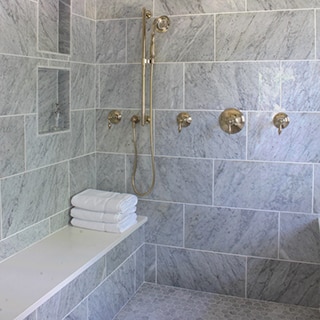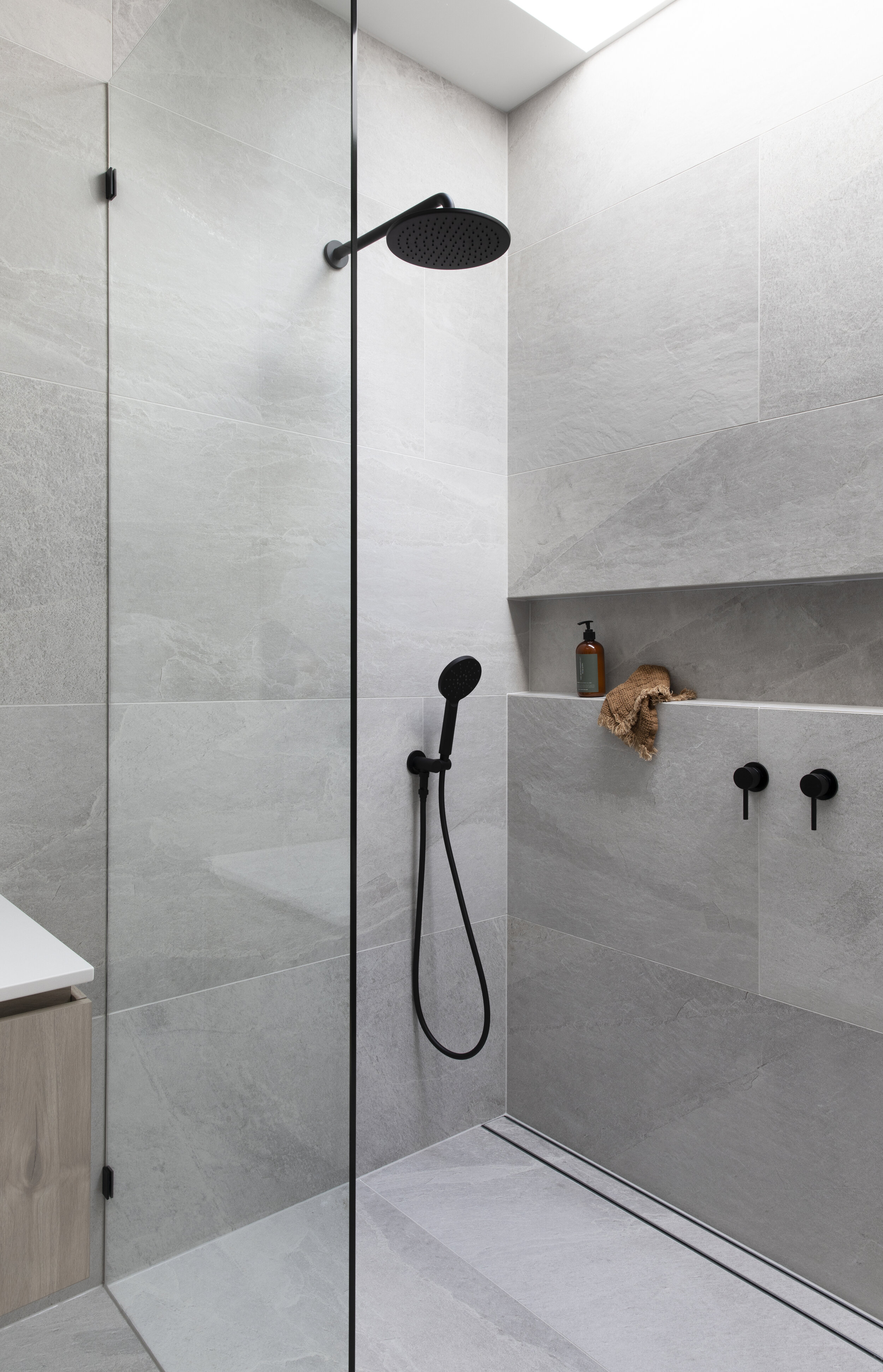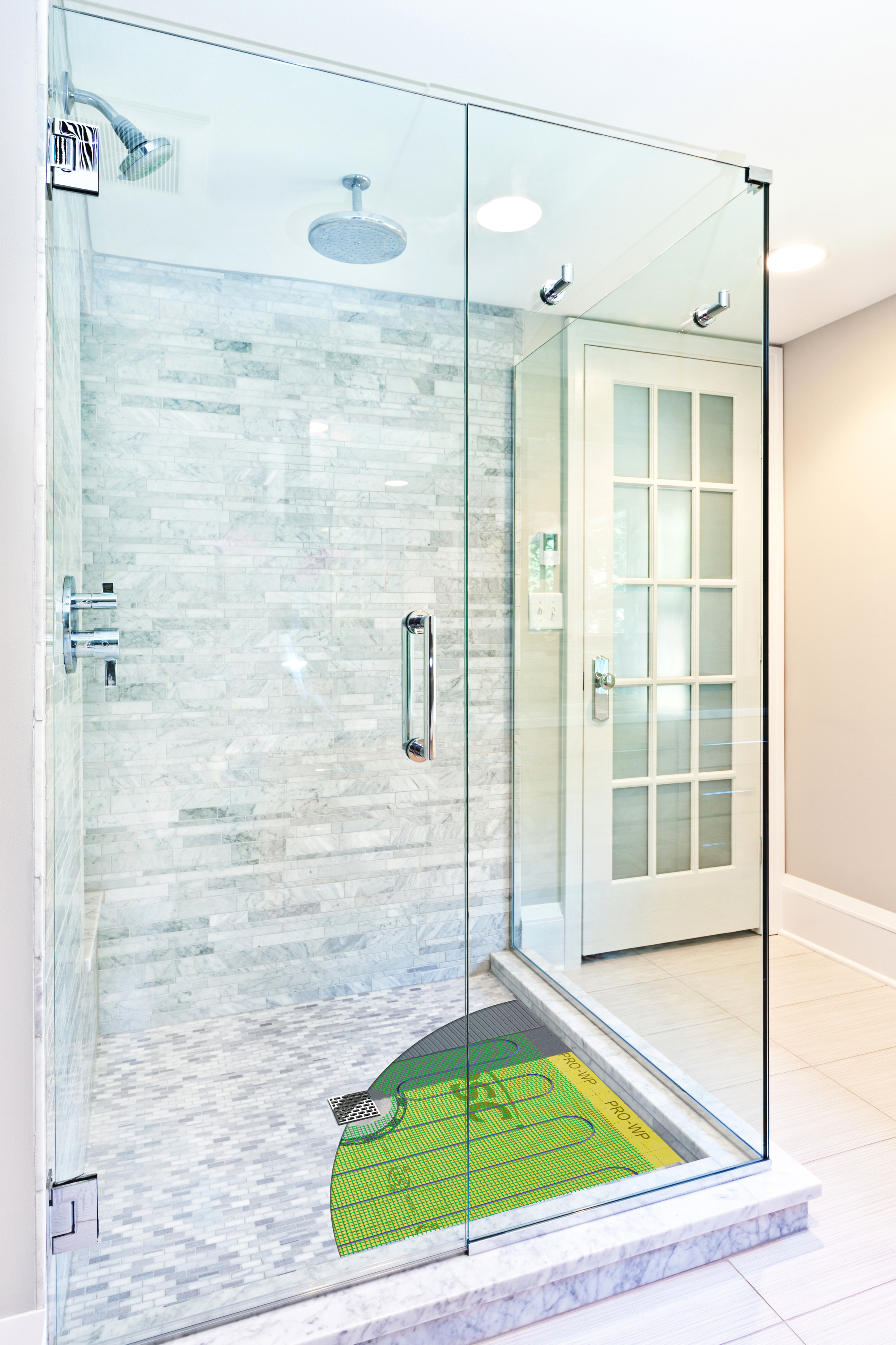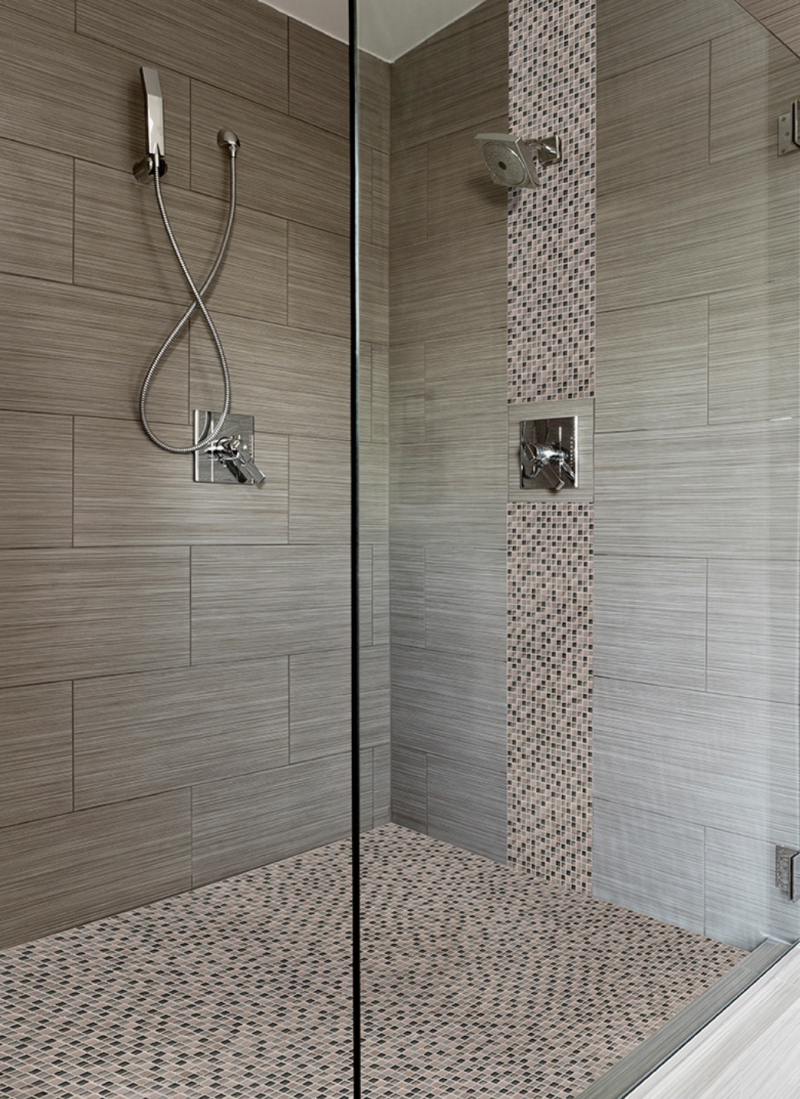Benefits of Using Tile for Your Bathroom Shower and Floor
Let’s first talk about what benefits of tiles can bring for your bathroom and shower floor.
- Durability: Tiles are known for their exceptional durability, making them an ideal choice for bathroom showers and floors. They can withstand high levels of moisture, heavy foot traffic, and daily wear and tear without losing their original appearance or functionality. With proper installation and maintenance, bathroom tiles can last for many years.
- Water Resistance: One of the main advantages of using tiles in your bathroom is their excellent water resistance. Unlike other flooring materials, such as wood or carpet, tiles do not absorb water. This makes them highly suitable for wet areas like showers, as they are not prone to warping, swelling, or developing mold and mildew. Additionally, tiles are easy to clean and maintain, ensuring a hygienic and healthy bathroom environment.
- Aesthetic Appeal: Tiles offer a wide range of design options, allowing you to create a unique and visually appealing bathroom. Whether you prefer a classic, modern, or eclectic style, there is a tile design to suit your taste. With various colors, patterns, sizes, and finishes available, you can easily achieve the desired look and feel for your bathroom shower and floor. Tiles can also be arranged in different layouts, such as herringbone or basketweave, adding an extra touch of elegance and sophistication.
- Versatility: Bathroom tiles are highly versatile and can be used to create a cohesive and coordinated look throughout your bathroom. You can choose to use the same tiles for both the shower and floor, creating a seamless and unified appearance. Alternatively, you can mix and match different tiles to create distinct zones or focal points within the bathroom. This versatility allows you to personalize your space and make it truly unique.
- Increased Property Value: Investing in quality bathroom tiles can significantly increase the value of your property. Potential buyers are often attracted to bathrooms with tiled showers and floors due to their durability, water resistance, and aesthetic appeal. A well-designed and maintained tiled bathroom can make a positive impression and enhance the overall value and desirability of your home.
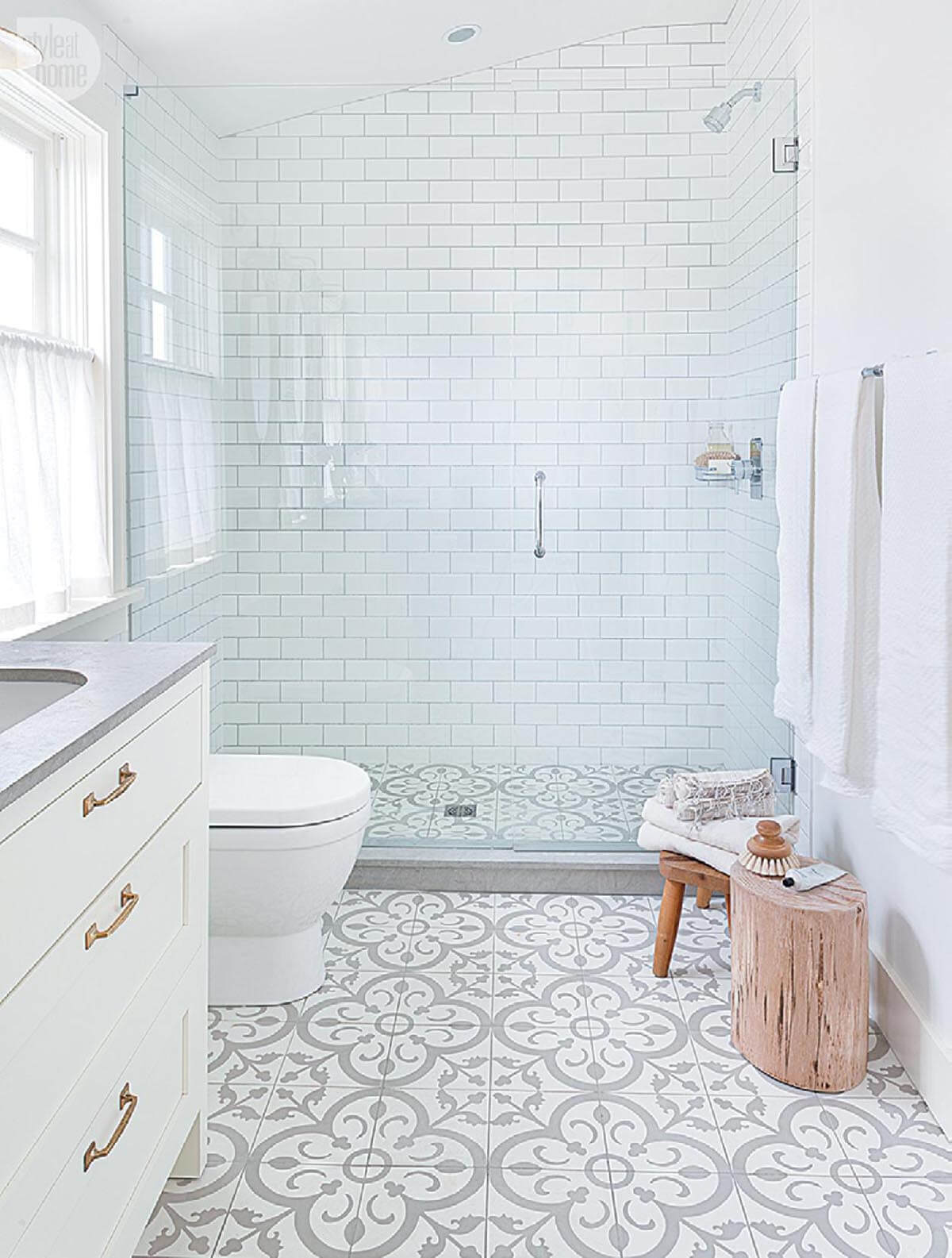
Choosing the Right Tile for Your Bathroom Shower and Floor
When it comes to selecting tiles for your bathroom shower and floor, it is important to consider both functionality and aesthetics. The right choice of tiles can enhance the overall look of your bathroom while also providing durability and resistance to water and moisture.
- Determine the Purpose: Before diving into different tile options, consider how you plan to use your bathroom. If it is a high-traffic area or if you have children or pets, you will want to choose tiles that are durable and resistant to stains and scratches.
- Consider the Size: The size of the tiles can greatly impact the visual appearance of your bathroom. Larger tiles can create an illusion of a bigger space, while smaller tiles can be used to create intricate patterns or mosaic designs.
- Look for Water Resistance: Bathrooms are prone to moisture and water exposure, so it is crucial to choose tiles that are water-resistant. Ceramic and porcelain tiles are popular choices as they have a low water absorption rate and are easy to clean.
- Choose the Right Finish: The finish of the tiles can also affect the overall look and feel of your bathroom. Matte finishes offer a contemporary and sophisticated look, while glossy finishes provide a sleek and reflective surface. Consider the level of slip resistance as well, especially for the shower floor.
- Coordinate with the Overall Design: The tiles should complement the overall design and style of your bathroom. Consider the color scheme, texture, and pattern of the tiles, and how they will harmonize with other elements such as the vanity, walls, and fixtures.
- Seek Professional Advice: If you are unsure about which tiles to choose, consult with a professional interior designer or tile specialist. They can provide valuable insights and recommendations based on your specific requirements and preferences.
Creative Design Ideas for Bathroom Tile Shower and Floor
Mosaic Masterpiece: Transform your bathroom shower and floor into a work of art with mosaic tiles. Use a combination of different colored tiles to create intricate patterns or even a mural. Whether you prefer a modern or traditional look, mosaic tiles can add a touch of elegance and creativity to your bathroom.
Nature-inspired Oasis: Bring the beauty of nature into your bathroom by incorporating natural stone tiles. Opt for earthy tones like pebble or river rock tiles for the shower floor to create a soothing and spa-like atmosphere. For the walls, consider using marble or travertine tiles to add a touch of luxury and elegance.
Bold and Geometric: If you’re looking to make a statement, consider using bold and geometric patterns for your bathroom shower and floor. Experiment with different shapes and sizes, such as hexagon or diamond tiles, to create a visually striking design. Pair these tiles with neutral-colored walls to create a balanced and modern look.
Vintage Charm: Give your bathroom a nostalgic and charming vibe by using vintage-inspired tiles for the shower and floor. Consider subway tiles with a beveled edge for a classic and timeless look. Pair it with vintage fixtures and accessories to complete the retro aesthetic.
Dramatic Dark Tones: Create a dramatic and luxurious atmosphere in your bathroom by using dark-colored tiles for the shower and floor. Opt for black or dark grey tiles to add depth and sophistication. Balance the darkness with light-colored walls and fixtures to create a striking contrast.
Coastal Retreat: If you love the beach and the ocean, why not bring that calming coastal vibe into your bathroom? Consider using sea-inspired tiles, such as blue or turquoise glass tiles, to create a beachy ambiance. Pair it with light-colored walls and accessories to complete the coastal retreat look.
Industrial Chic: Embrace the industrial trend by using concrete or cement tiles for your bathroom shower and floor. These tiles add a raw and edgy element to your space, creating a modern and urban feel. Pair it with minimalist fixtures and accessories to enhance the industrial chic aesthetic.
Playful Patterns: Add a touch of fun and playfulness to your bathroom with patterned tiles. Whether it’s geometric shapes, floral prints, or even animal motifs, patterned tiles can instantly liven up your space. Keep the rest of the bathroom decor simple to let the tiles take center stage.
How to Properly Install Bathroom Tile Shower and Floor
Installing bathroom tile for the shower and floor can be a challenging task, but with the right materials and techniques, you can achieve a professional-looking result. This section will guide you through the step-by-step process of properly installing bathroom tile for both the shower and floor areas.
1. Gather the necessary materials:
Before starting the installation process, make sure you have all the required materials. This includes tiles, tile adhesive, grout, tile spacers, a trowel, a tile cutter, a level, a sponge, and a tile sealer. Ensure that the tiles you choose are suitable for wet areas like the shower and have a slip-resistant surface for the floor.
2. Prepare the surface:
Properly preparing the surface is crucial for a successful tile installation. Start by removing any existing tiles, adhesive, or grout from the area. Ensure that the surface is clean, dry, and free from any debris. If necessary, repair any cracks or imperfections and apply a waterproofing membrane to prevent water damage.
3. Layout and design:
Before you start installing the tiles, it’s essential to plan the layout and design. Measure the area and determine the best way to arrange the tiles. Use tile spacers to create even gaps between the tiles for grout lines. Consider using a tile design tool or software to visualize your design before proceeding.
4. Apply the tile adhesive:
Using a trowel, apply the tile adhesive to a small section of the surface. Hold the trowel at a 45-degree angle to create ridges in the adhesive. This will help ensure proper adhesion of the tiles. Only apply adhesive to an area that you can tile within 10-15 minutes to prevent it from drying out.
5. Install the tiles:
Carefully press each tile into the adhesive, using a slight twisting motion to secure it in place. Use a level to ensure that the tiles are straight and even. Continue this process, applying adhesive and installing tiles one section at a time. Remember to leave space for any necessary cuts around fixtures or edges.
6. Cut and trim tiles:
For tiles that need to be cut or trimmed, use a tile cutter or a wet saw. Measure and mark the tile where it needs to be cut, then carefully make the cut. Take your time to ensure accurate cuts and use safety precautions when operating power tools.
Maintenance Tips for Keeping Your Bathroom Tile Shower and Floor Looking New
Regular Cleaning Routine:
To keep your bathroom tile shower and floor looking new, it is important to establish a regular cleaning routine. This should include wiping down the tiles after each use to prevent soap scum and mineral deposits from building up. Use a non-abrasive cleaner specifically designed for tile to avoid damaging the surface.
Sealing the Grout:
Grout is a porous material that can easily absorb stains and dirt. To prevent this, it is essential to seal the grout on your bathroom tile shower and floor. Apply a grout sealer every six months to protect the grout from moisture and stains. This will help maintain the appearance of your tiles and prolong their lifespan.
Avoid Harsh Cleaners:
While it may be tempting to use harsh chemicals or abrasive cleaners to tackle tough stains, it is important to avoid them when cleaning bathroom tile. Harsh cleaners can damage the tile surface and strip away the protective sealant on the grout. Instead, opt for mild, non-abrasive cleaners that are specifically formulated for tile.
Prevent Water Damage:
Water damage is a common issue in bathrooms, especially in areas with tile showers and floors. To prevent water damage, ensure that your bathroom is properly ventilated to reduce humidity levels. Use a shower curtain or door to contain water within the shower area and wipe up any standing water on the floor immediately to avoid seepage.
Protective Measures:
Taking preventive measures can go a long way in keeping your bathroom tile shower and floor looking new. Use bath mats or rugs in high traffic areas to prevent wear and tear on the tiles. Avoid dropping heavy objects on the tiles to prevent cracks or chips. Additionally, consider applying a clear coat of sealant over the tiles to provide an extra layer of protection.
Regular Inspections:
Regularly inspect your bathroom tile shower and floor for any signs of damage or wear. Look for loose tiles, cracks in the grout, or any areas that may require repair. Addressing these issues promptly can prevent further damage and help maintain the overall appearance of your bathroom.
Related Images
Tile Shower Kits Shower Waterproofing Kits
Best Shower Floor Tiles This Year
April Showers
Mosaic Tile Inspirations for Your Bathroom and Shower
Best Shower Floor Tile Ideas – Bathroom Flooring Designs
Related Posts:
- Bathroom Floor Tile Ideas Images
- Rubber Flooring Bathroom Ideas
- Mosaic Tile Patterns Bathroom Floor
- Master Suite Bathroom Floor Plans
- Wood Floor Bathroom Pictures
- Bathroom Floor Tile Patterns Ideas
- Bathroom With Grey Tile Floor
- Dark Wood Floor In Bathroom
- Victorian Bathroom Vinyl Flooring
- Bathroom Ideas Grey Floor
